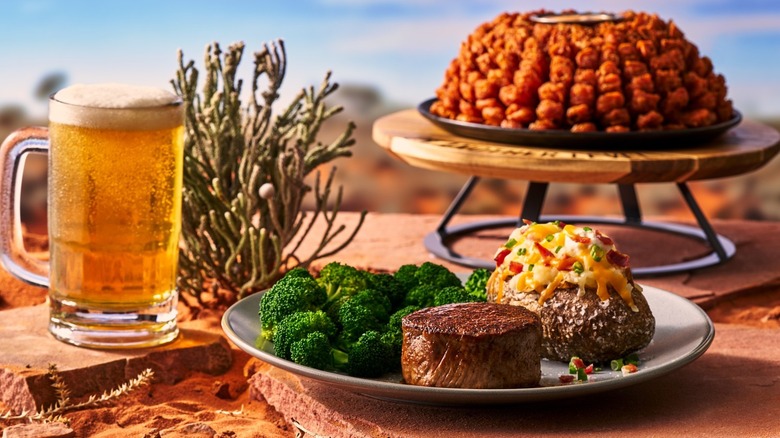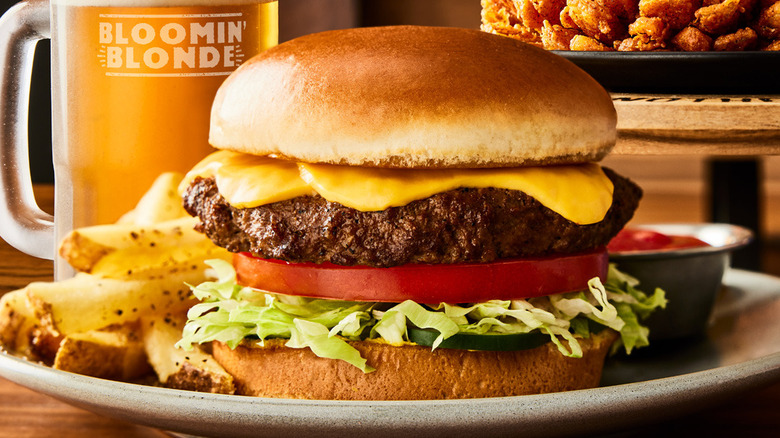Why Outback Is One Of The Worst Steakhouse Chains
While many steakhouse chains succeed by offering a combination of reasonable prices, great flavor, and value, some fail to meet these standards. Food Republic, for instance, ranked the best and worst steakhouse chains in the U.S., and Outback emerged as one of the bottom contenders.
First, Outback is often more expensive than its competitors. A 13-ounce ribeye costs $27.99 at Outback, while a similar steak is $26.49 at LongHorn and $25.49 for a 14-ounce version at Texas Roadhouse. While LongHorn offers a slightly more upscale dining experience and Texas Roadhouse embraces a casual Western theme, Outback Steakhouse is not even actually Australian, and lacks a clear identity.
Second, its quality has dropped significantly in recent years. While the Bloomin' Onion may have made it famous, you can now find a cheaper, arguably higher-quality version at Texas Roadhouse. Add to this the Outback subreddit filling with complaints about menu cuts, prime rib being available only on weekends, an overall drop in quality, and some locations adding a mandatory 2.99% hospitality fee, and you have one of the worst steakhouse chains in the country.
Outback's cost-cutting measures have backfired
Food Republic staff aren't the only ones seeing a sharp decline in Outback's quality — American consumers are also speaking with their wallets. Store traffic and same-store sales are down, signaling that the company no longer holds a strong place in the minds of diners.
To stay afloat during COVID, Outback raised its prices while reducing portion sizes, leading to a higher cost for less value. The chain also leaned heavily on promotional deals to drive traffic, a strategy that might give a short-term boost but often becomes a hassle for staff and doesn't ensure long-term success. While LongHorn's parent company, Darden, saw its total sales grow by 8.6% in its fiscal year 2024, Outback's parent company, Bloomin' Brands, struggled with declining sales and falling stock performance, leading to the closure of more than 40 restaurants.
In September 2024, Bloomin' Brands appointed Michael Spanos as its new CEO and board member, despite his having no experience in the restaurant industry. In a 2025 first-quarter earnings call to shareholders, Spanos admitted, "We are not where we want to be," especially in comparison to other steakhouse chains (via FSR). His tenure got off to a rocky start when, in February 2025, Bloomin' Brands announced it was cutting 100 jobs in corporate administration and restaurant operations support. While it takes time to see the benefits of cost-cutting measures aimed at improving returns, it remains to be seen whether this marks a fresh start for the Australian-themed brand or the beginning of the end.


